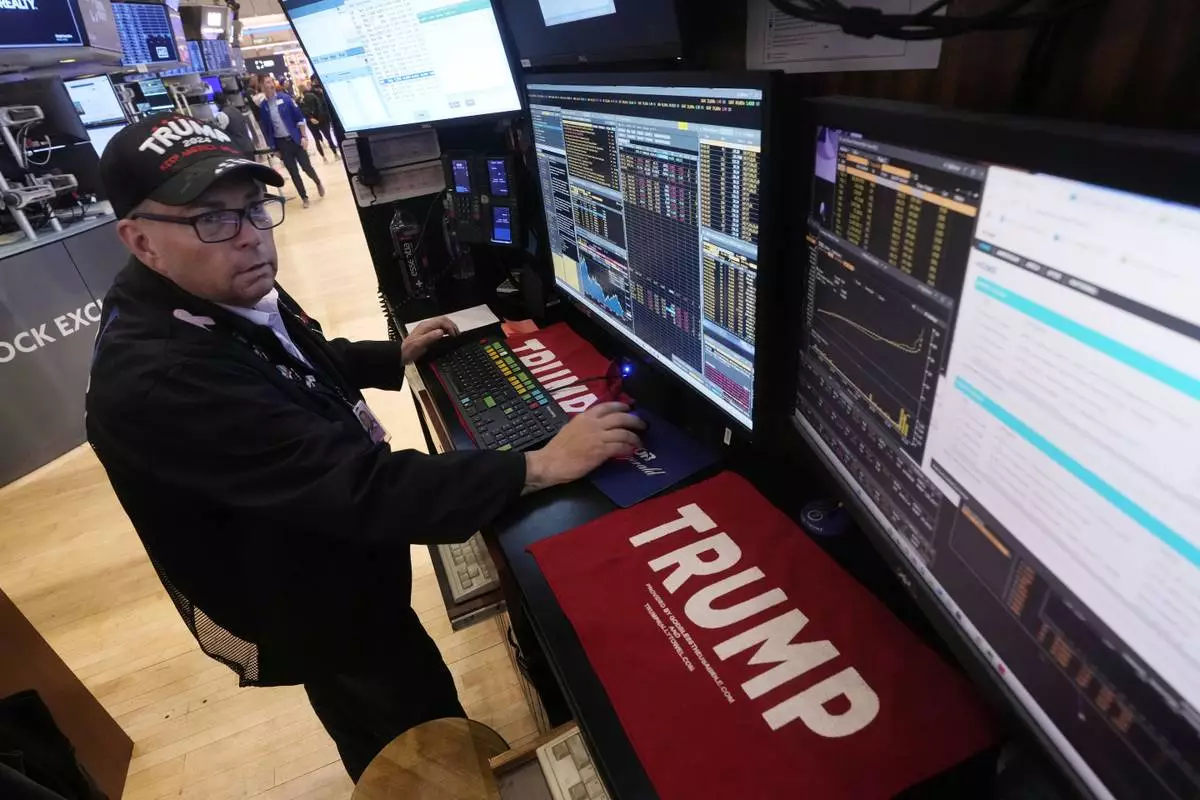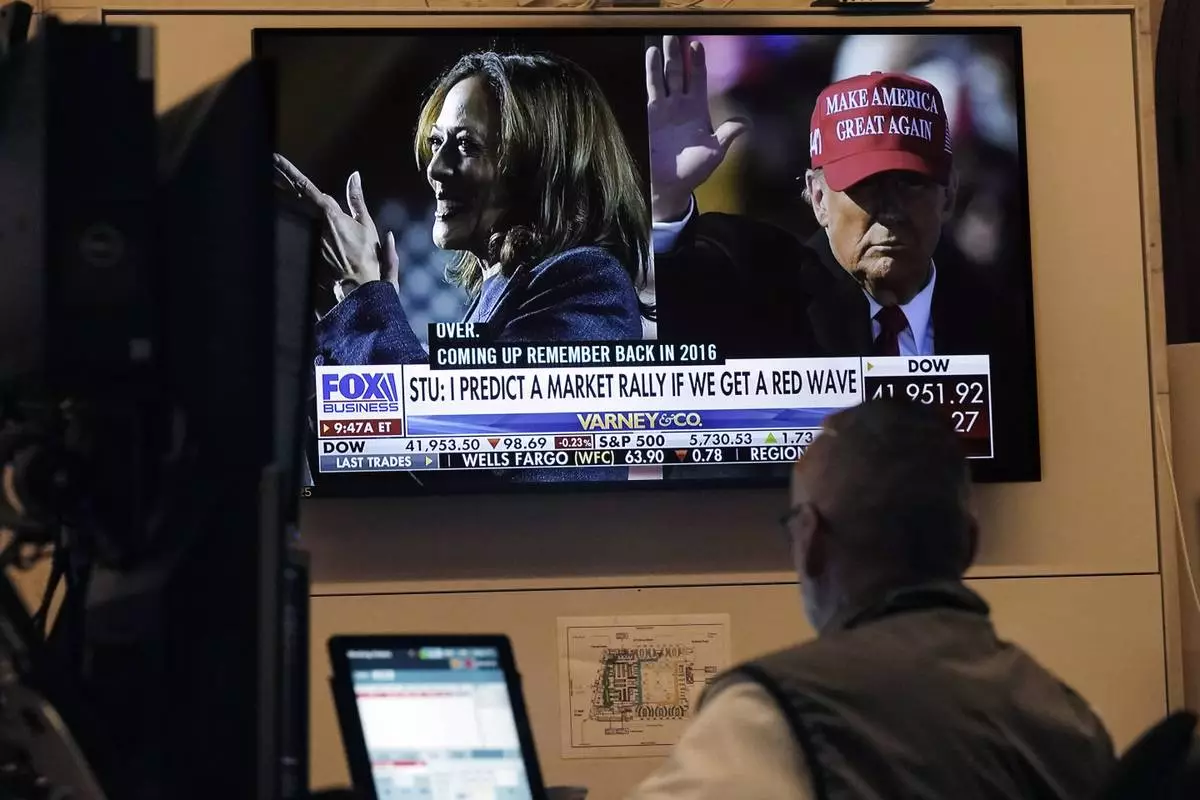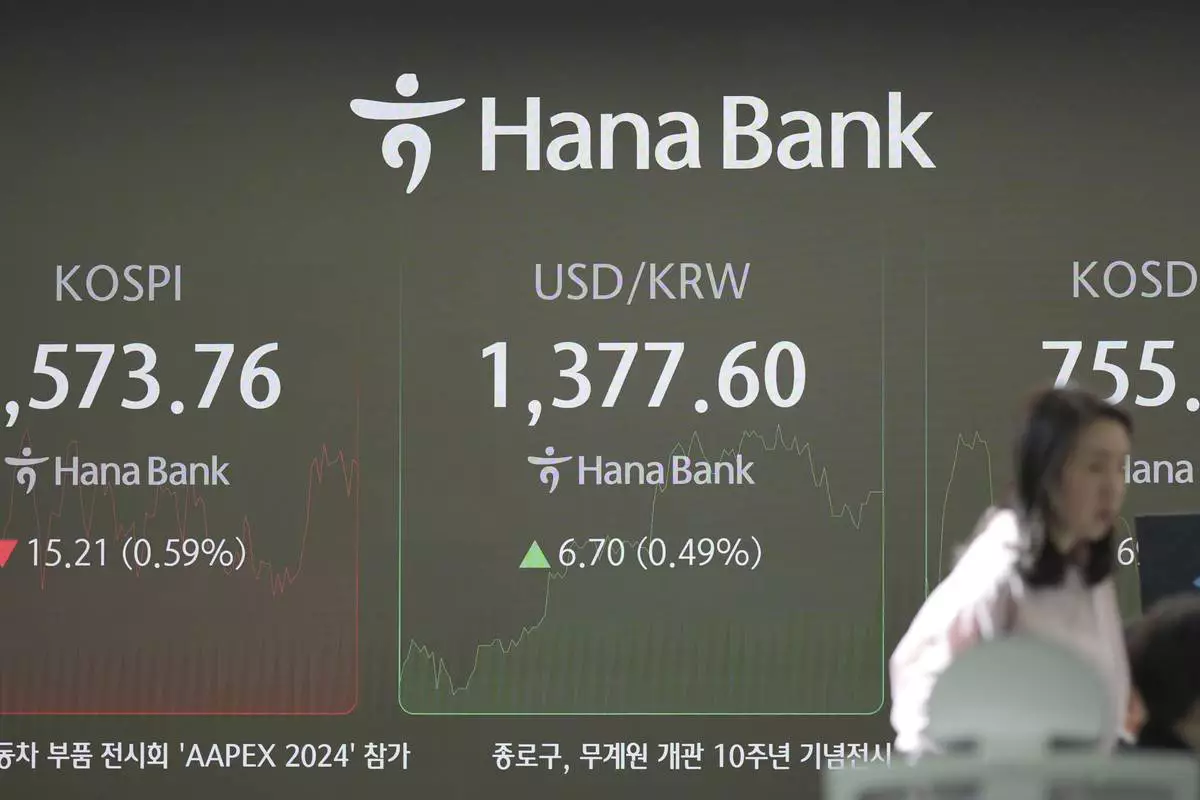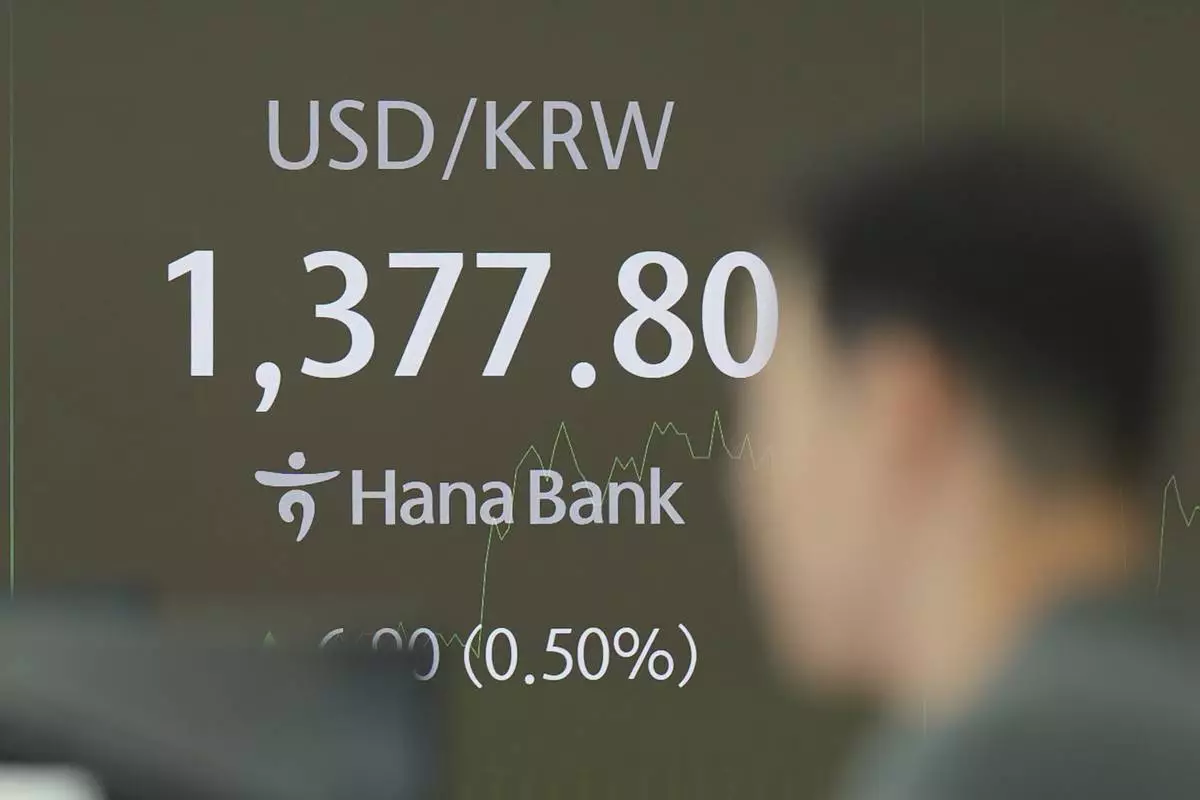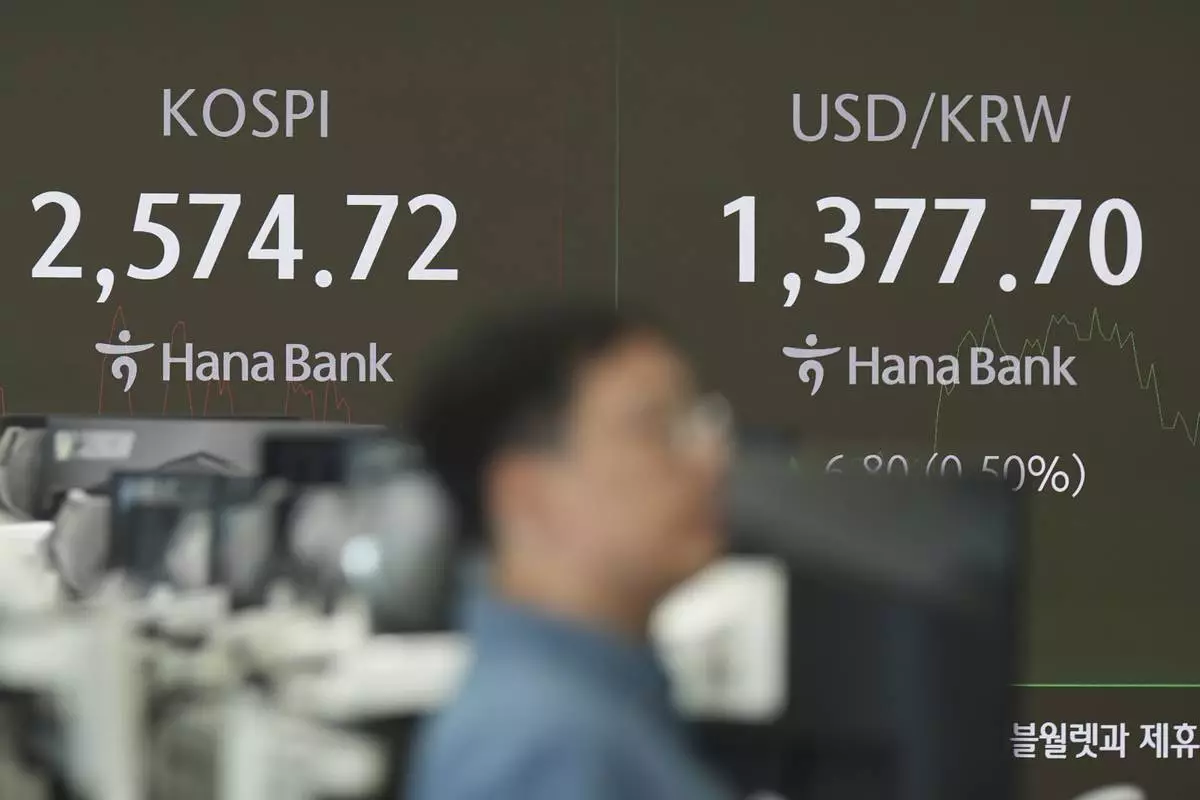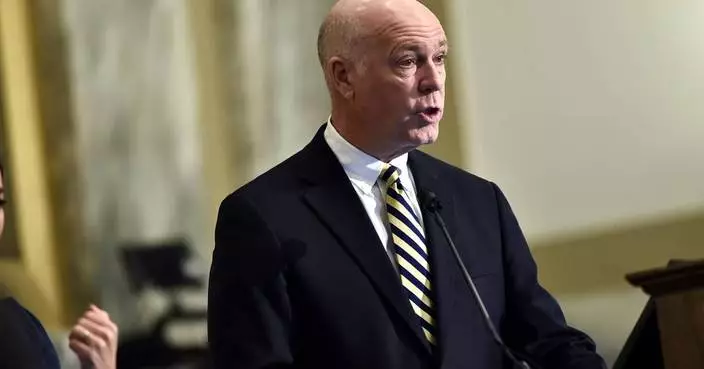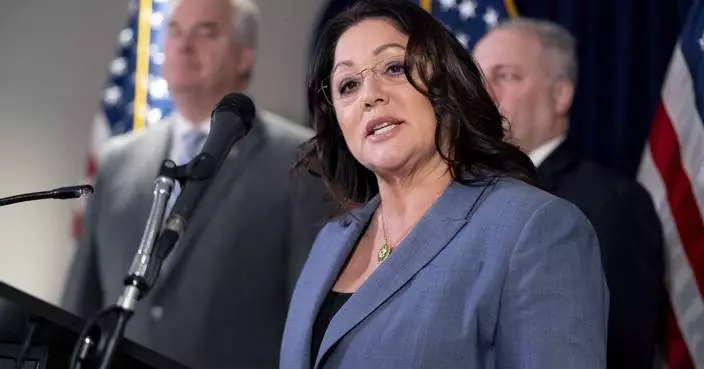ANNAPOLIS, Md. (AP) — For years in deep-blue Maryland, U.S. Senate races often have been blowouts for solid Democratic incumbents against little-known Republicans, without much chance of an upset or control of the chamber potentially at stake.
That's not the case with the race this year for an open U.S. Senate seat in Maryland.
Larry Hogan, a popular Republican who won two terms as governor, is the most competitive candidate for the GOP in years in the race to replace retiring Democratic Sen. Ben Cardin. Still, he is facing an uphill battle against Democrat Angela Alsobrooks, the county executive of Prince George's County, who could make history as the state's first Black U.S. senator in a state where Democrats outnumber Republicans 2-1.
The stakes are unusually high for a Maryland race that includes a Republican who won significant Democratic support in his 2014 and 2018 gubernatorial victories. Hogan is only the second Republican in Maryland history to be reelected governor.
Democrats currently hold a 51-49 Senate advantage, including independent senators who caucus with Democrats. And Democrats have to defend 23 seats out of the 33 Senate seats on the ballot around the country this November.
Hogan won the governorship in an upset by running on fiscal concerns and campaigning against tax increases, and he boosted his popularity in a blue state partly by becoming one of former President Donald Trump's fiercest critics in the GOP. He has campaigned for Senate by underscoring his willingness to put country over party, to work in a bipartisan manner and to provide an independent voice in partisan Washington.
“The only way we're going to make a difference is if we can find strong, independent leaders who are willing to stand up to both parties and try to bring about common sense bipartisan solutions, which is exactly what I delivered for eight years as governor,” Hogan said during a debate in October on Maryland Public Television.
But Alsobrooks has pointed to his record as governor, particularly some high-profile vetoes of priority legislation approved by the Maryland General Assembly, which is controlled by Democrats. She also has highlighted his recruitment to run for Senate by Kentucky Sen. Mitch McConnell, a longtime Republican Senate leader, in hopes of winning back the chamber.
“The Republican Party has declared war on women's reproductive freedoms,” Alsobrooks said in the debate. “We recognize that this party of chaos and division that is led by Donald Trump is one that cannot lead our country and also has severe consequences for Marylanders.”
Abortion has been a major issue in a campaign taking place at the same time that voters in Maryland and eight other states will be considering a constitutional amendment to enshrine abortion rights in the state constitution, after the U.S. Supreme Court struck down Roe v. Wade in 2022.
Alsobrooks has prioritized abortion rights in her campaign, saying one of her first actions as a senator would be to sponsor legislation to codify Roe into federal law. Hogan also says he would co-sponsor such legislation, but Alsobrooks is quick to point to a Hogan veto when he was governor of a bill in Maryland to expand abortion access in 2022.
“The fact of the matter is when the former governor had an opportunity to stand up for the women of Maryland, he didn’t,” Alsobrooks said during the October debate. “He vetoed abortion care legislation. He double downed and refused to release the funding to train abortion care providers. This was just two years ago.”
The measure ended a restriction that only physicians can provide abortions in the state. The legislature, which is controlled by Democrats, overrode the veto, and the law enables nurse practitioners, nurse midwives and physician assistants to provide care. Hogan says Alsobrooks has mischaracterized his position. He says he vetoed the bill out of concerns for women's health, because the measure allowed health care providers who aren't doctors to perform abortions.
“Your entire campaign is based on multiple things that are completely not true,” Hogan said to Alsobrooks during the debate. “I will support and will sponsor codifying Roe.”
While a Republican has not won a Senate race in Maryland in more than 40 years, Hogan has wide name recognition. In the last two U.S. Senate races in Maryland, the Democratic candidate won by more than 30 percentage points against candidates who were not well known.
The last time a statewide-elected Republican official ran for Senate in Maryland was when Lt. Gov. Michael Steele ran against Cardin in 2006 for a seat that was opening due to the retirement of then-Sen. Paul Sarbanes. Cardin won by 10 percentage points.
Hogan, who once considered running for president and has often appeared on national news programs, is the most formidable Republican Senate candidate in Maryland in years. Still, he acknowledged in an August interview with The Associated Press that he is the “underdog.”
“It’s nearly impossible to do what I’m trying to do, but we’re pleased with where we are,” the former governor said at the time.
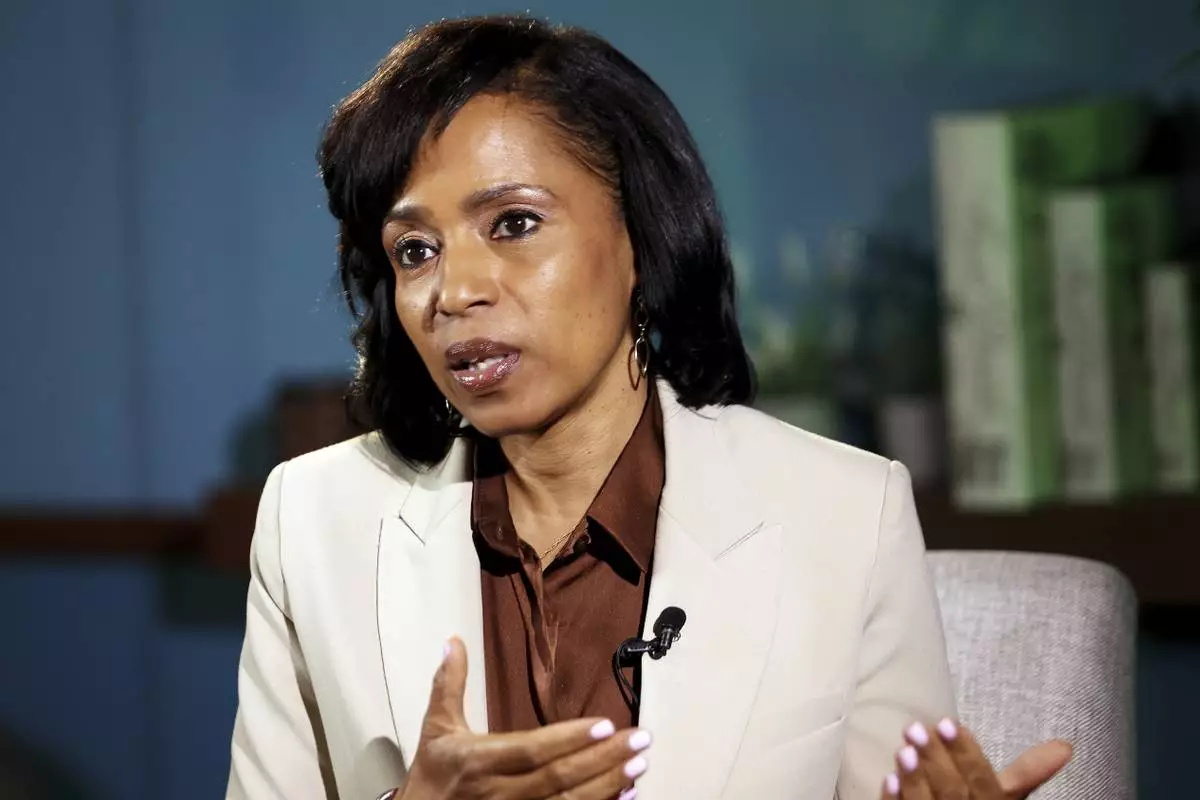
FILE - Prince George's County Executive Angela Alsobrooks, Demoractic candidate for Maryland's Senate seat, speaks during an interview in Gaithersburg, Md., Sept. 20, 2024. (AP Photo/Daniel Kucin Jr., File)

FILE - Former Maryland Gov. Larry Hogan speaks during the Hogan for Maryland Primary Night Victory Party, May 14, 2024, in Annapolis, Md. (AP Photo/Daniel Kucin Jr., File)
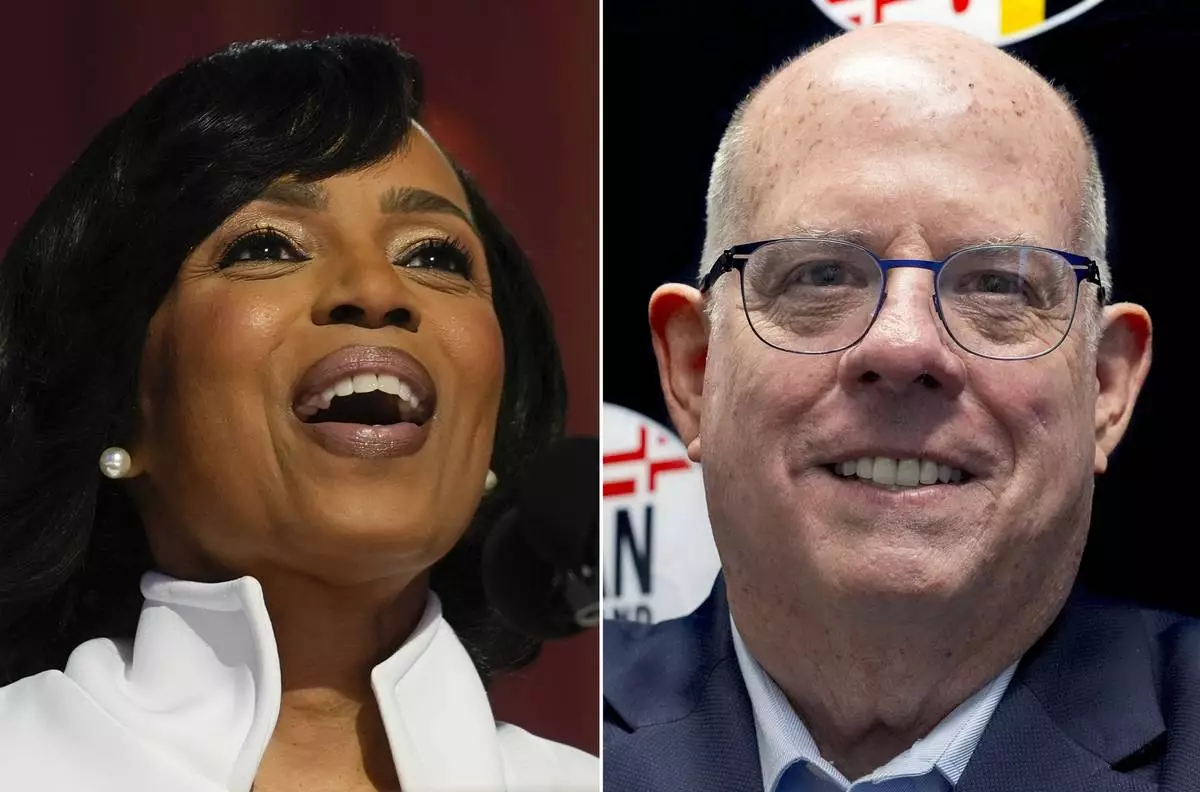
FILE - This combination of images shows from left, Democratic Maryland Senate candidate Angela Alsobrooks in Chicago, Aug. 20, 2024, and Republican opponent, former Maryland Gov. Larry Hogan in Annapolis, on Aug. 27, 2024. (AP Photo Erin Hooley, left; and AP Photo Stephanie Scarbrough, File)



